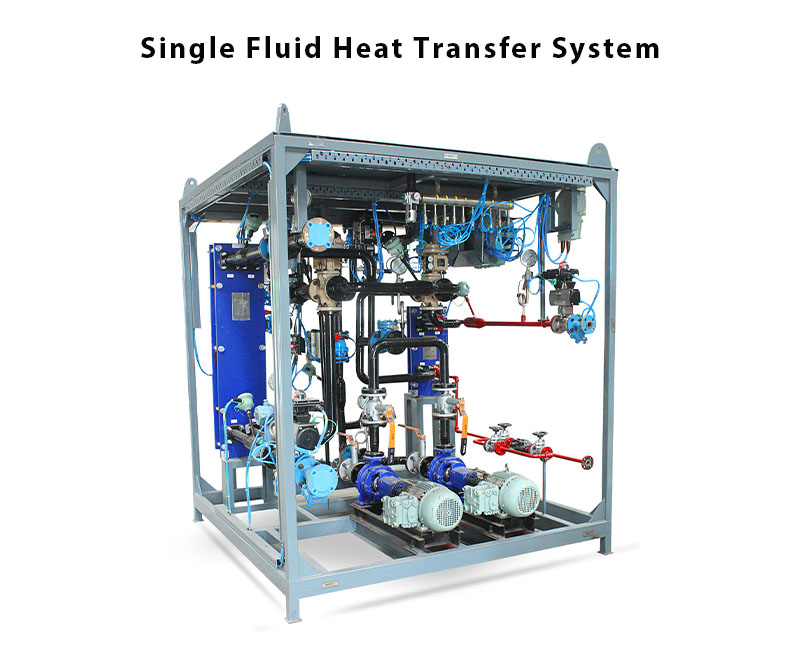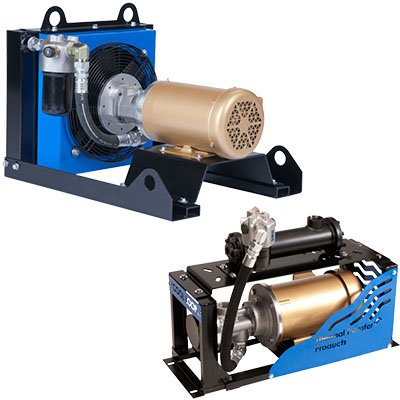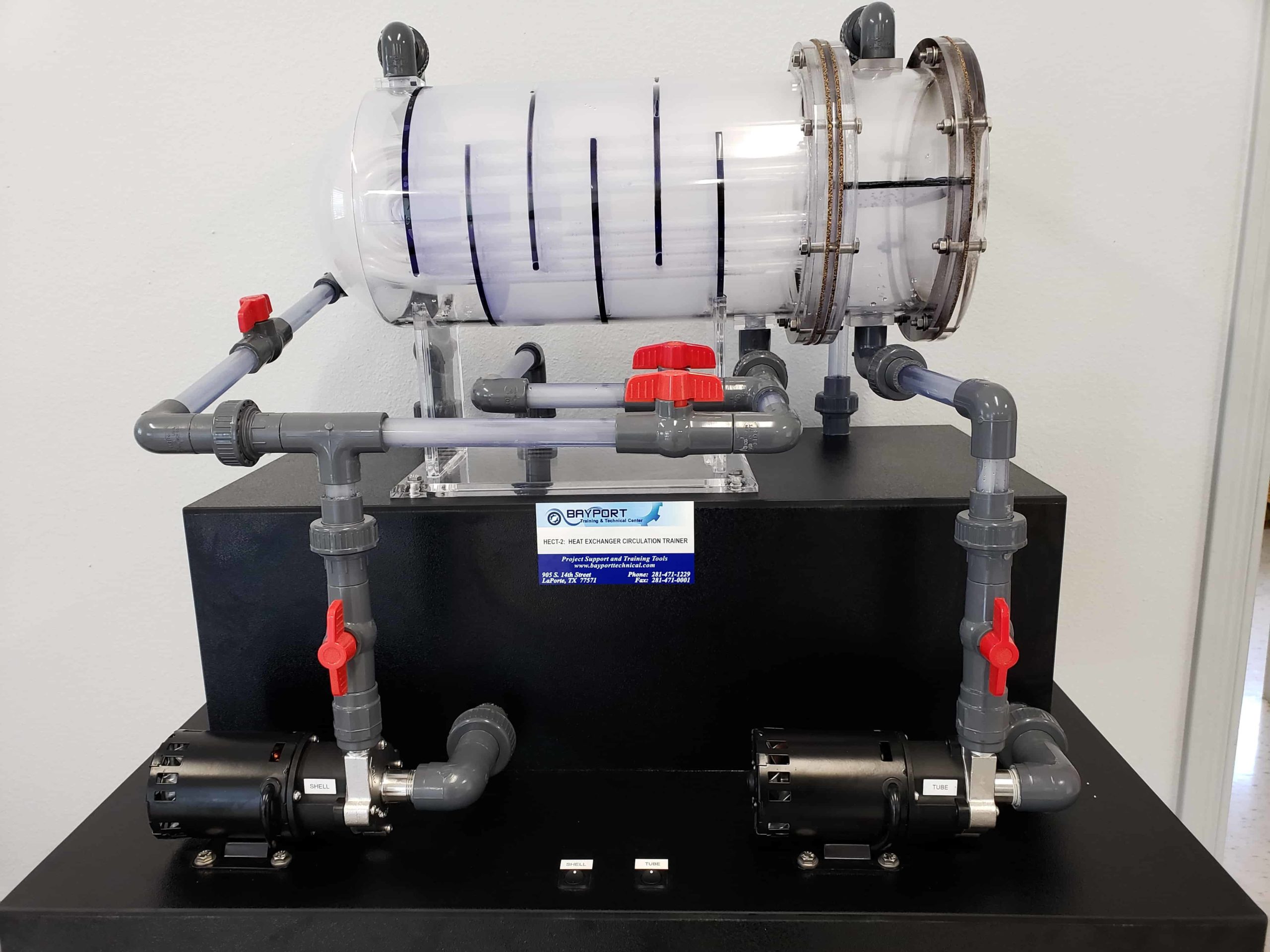Why DVS Heat Transfer Systems Use Nanotechnology to Outperform Traditional Cooling Systems
The Function of Heat Transfer Equipments in Sustainable Power Solutions for the Future
Heat transfer systems are crucial in the mission for lasting power remedies. They enhance thermal power monitoring, improving the performance of eco-friendly modern technologies. By using systems like radiation, convection, and conduction, these systems lessen power losses. Their function in solar thermal and geothermal applications is particularly substantial. As advancements emerge, the potential for additional advancements raises essential inquiries regarding future energy strategies. What developments will form the landscape of sustainable power?
Comprehending Heat Transfer Solutions

The Relevance of Thermal Power Administration
Efficient thermal power monitoring is essential for making the most of power efficiency and lessening waste in various systems. By regulating temperature and maximizing Heat transfer processes, organizations can significantly reduce energy consumption and operational prices. Effective monitoring involves the application of innovative technologies and practices that keep an eye on and regulate thermal problems within systems, ensuring that power resources are utilized efficiently. Additionally, appropriate thermal power management contributes to lowering greenhouse gas exhausts, lining up with worldwide sustainability objectives. It additionally boosts system reliability and efficiency, bring about boosted item top quality and longer tools lifespan. Inevitably, focusing on thermal power monitoring is a vital action in the direction of developing much more sustainable energy solutions and promoting a liable strategy to power usage in residential and industrial contexts.
Applications of Heat Transfer in Renewable Power
While numerous renewable resource sources promise sustainability, the reliable application of Heat transfer plays a crucial duty in their effectiveness. In wind energy systems, Heat transfer is made use of for wind turbine element cooling, boosting performance and durability. Geothermal energy counts on reliable Heat exchange between the planet's subsurface and the liquid circulating in the system, maximizing power removal. Biomass power processes also gain from Heat transfer, as it helps in converting organic materials into functional gas with pyrolysis and gasification. In addition, in hydropower, preserving perfect temperatures in tanks can improve power result. Each of these applications shows the crucial relevance of Heat transfer systems in enhancing sustainable power technologies, inevitably contributing to a more sustainable power future.
Enhancing Solar Thermal Power Efficiency
As solar thermal power systems remain to develop, boosting their effectiveness has come to be necessary for making best use of energy result. Advancements in Heat transfer technologies, such as boosted thermal storage space materials and cutting-edge Heat exchangers, play a substantial duty in boosting efficiency. By using advanced materials that have remarkable thermal conductivity, systems can move and record Heat much more successfully. In addition, integrating radar that adhere to the sun's course warranties that collectors get suitable solar exposure throughout the day. Utilizing nanotechnology in solar absorbers can additionally raise energy absorption rates. Furthermore, including automated control systems helps manage and control temperature levels power circulation effectively, resulting in decreased losses and improved total system effectiveness. These improvements lead the way for more lasting solar thermal power options in the future.
Geothermal Heating: A Sustainable Option
Geothermal heating presents a practical choice for sustainable power, offering considerable environmental benefits through lowered greenhouse gas emissions. Its efficiency and cost-effectiveness make it an attractive alternative to conventional heating unit. Difficulties connected to application must be resolved to optimize its potential effect.
Environmental Benefits of Geothermal
Although standard home heating techniques add significantly to greenhouse gas exhausts, geothermal heating presents a compelling choice that reduces ecological impact. By using the Planet's inner Heat, geothermal systems use a sustainable power source, substantially reducing dependence on fossil gas. This method produces very little carbon emissions, making it a cleaner option for commercial and property home heating. Furthermore, geothermal systems promote energy efficiency, as they call for less energy compared to conventional furnace. DVS Heat Transfer Systems. The use of geothermal power also aids in lowering air pollution, enhancing local air top quality and public health and wellness. As a lasting remedy, geothermal heating sustains climate adjustment reduction initiatives, positioning itself as a vital component in the shift towards a greener future
Performance and Cost-Effectiveness
Exactly how does geothermal heating measure up in regards to efficiency and cost-effectiveness compared to standard heating systems? Geothermal home heating shows superior efficiency, frequently accomplishing a coefficient of efficiency (POLICE OFFICER) of 3 to 5, indicating it generates 3 to 5 units of Heat for each unit of electrical energy consumed. This efficiency converts right into lower operating expense, especially in areas with steady geothermal resources. Initial setup costs can be higher than traditional systems; however, long-term savings on energy expenses and decreased maintenance costs can counter these in advance financial investments. Additionally, numerous federal governments incentivize geothermal systems through refunds and tax obligation credit scores, boosting their cost-effectiveness. Overall, geothermal home heating becomes a lasting and economically viable choice to even more traditional home heating remedies.
Execution Difficulties and Solutions
Numerous challenges can restrain the extensive execution of geothermal furnace, despite their clear benefits as a lasting energy option. High first setup prices often hinder capitalists and property owners, making financing a considerable obstacle. Additionally, the geographical constraints of suitable geothermal websites limit access in specific areas. Neighborhood policies and permitting procedures can also make complex project development, causing hold-ups. Public recognition and understanding of geothermal systems stay reduced, hindering acceptance. To deal with these obstacles, targeted education projects can enhance open secret, while government motivations could reduce financial concerns. Collaborating with local authorities to enhance guidelines might promote smoother project approvals, ultimately promoting the adoption of geothermal home heating as a feasible, lasting power option.
Innovations in Heat Transfer Technologies
Innovations in Heat transfer modern technologies play a crucial role in enhancing power performance and sustainability. Advanced Heat exchangers and phase adjustment products are at the center of these developments, offering substantial renovations in thermal management. These modern technologies not only optimize energy use yet likewise add to decreasing environmental influence in different applications.
Advanced Heat Exchangers
Advanced Heat exchangers play a crucial role in improving power effectiveness across numerous applications in lasting power remedies. These devices help with the transfer of Heat in between two or more liquids, substantially minimizing energy intake in processes such as industrial home heating, air conditioning, and power generation. Developments in materials and design, such as using nanofluids and click here for more compact arrangements, have actually resulted in boosted thermal performance and decreased dimension needs. Additionally, developments in electronic monitoring and control systems enable maximized operation, more raising effectiveness. By decreasing waste Heat and optimizing energy healing, progressed Heat exchangers add to lower carbon footprints and sustain the shift towards eco-friendly innovations. Their proceeded growth is crucial for achieving international energy sustainability objectives.
Stage Adjustment Materials
The integration of phase change materials (PCMs) right into Heat transfer technologies stands for a significant development in energy monitoring and performance. PCMs take in and release thermal energy throughout their stage adjustments, allowing effective description temperature guideline in building products and power systems. By storing excess Heat throughout height periods and launching it when demand increases, PCMs contribute to pack shifting and power conservation - DVS Heat Transfer Systems. This capability improves the efficiency of renewable energy systems, particularly in solar thermal applications. Furthermore, PCMs can improve the thermal comfort of indoor settings, lowering dependence on conventional heating and cooling methods. As advancements in PCM solutions proceed to emerge, their duty in sustainable energy options is positioned to grow, offering encouraging methods for future study and application

Future Potential Customers for Heat Transfer in Lasting Power
As the demand for sustainable energy options proceeds to climb, the duty of Heat transfer systems is becoming significantly crucial in shaping future innovations. Innovations in products and styles are anticipated to enhance performance in Heat transfer, reducing power losses in different applications. The assimilation of sophisticated thermal storage systems, such as stage modification products and thermochemical storage space, will certainly allow much better administration of energy resources. Research into nanofluids and biomimetic Heat exchangers may additionally optimize thermal efficiency. The fostering of smart technologies will enable for real-time monitoring and flexible control of Heat transfer processes. These improvements are poised to considerably contribute to the overall efficiency and sustainability of energy systems, leading the way for a much more energy-efficient future.
Often Asked Inquiries
How Can People Apply Heat Transfer Systems in your home?

People can execute More Info Heat transfer systems in your home by mounting energy-efficient appliances, using radiant heat, and maximizing insulation. These measures improve energy performance, lower expenses, and promote sustainable practices in domestic settings.

What Are the Prices Related To Mounting Heat Transfer Systems?
The expenses connected with mounting Heat transfer systems differ commonly, generally including equipment, installment labor, and upkeep. Factors such as system kind, home dimension, and local laws greatly affect the general expense involved.
Are There Government Motivations for Heat Transfer System Installations?
Federal government incentives for Heat transfer system installments differ by region and can consist of tax credit ratings, grants, and refunds. These economic advantages aim to encourage adoption, inevitably advertising power effectiveness and minimizing environmental impact within areas.
Exactly How Do Heat Transfer Solutions Impact Energy Bills?
Heat transfer systems significantly influence power costs by maximizing energy effectiveness. By improving the transfer of Heat, these systems reduce energy usage, leading to reduced energy costs and developing a more sustainable method to energy monitoring.
What Maintenance Is Required for Heat Transfer Equipments?
Upkeep for Heat transfer systems includes regular examinations, cleansing of elements, inspecting liquid levels, ensuring proper insulation, and replacing used parts. These tasks help keep performance, stop failures, and extend the system's operational life-span.
These systems facilitate the activity of thermal energy from one tool to an additional, allowing the transfer of Heat for energy, home heating, or cooling generation functions. Geothermal power counts on reliable Heat exchange between the earth's subsurface and the fluid distributing in the system, taking full advantage of energy extraction. Additionally, geothermal systems promote power effectiveness, as they call for less power contrasted to standard home heating systems. Advanced Heat exchangers play a crucial function in enhancing energy effectiveness across various applications in lasting power remedies. Heat transfer systems notably influence energy expenses by maximizing energy effectiveness.